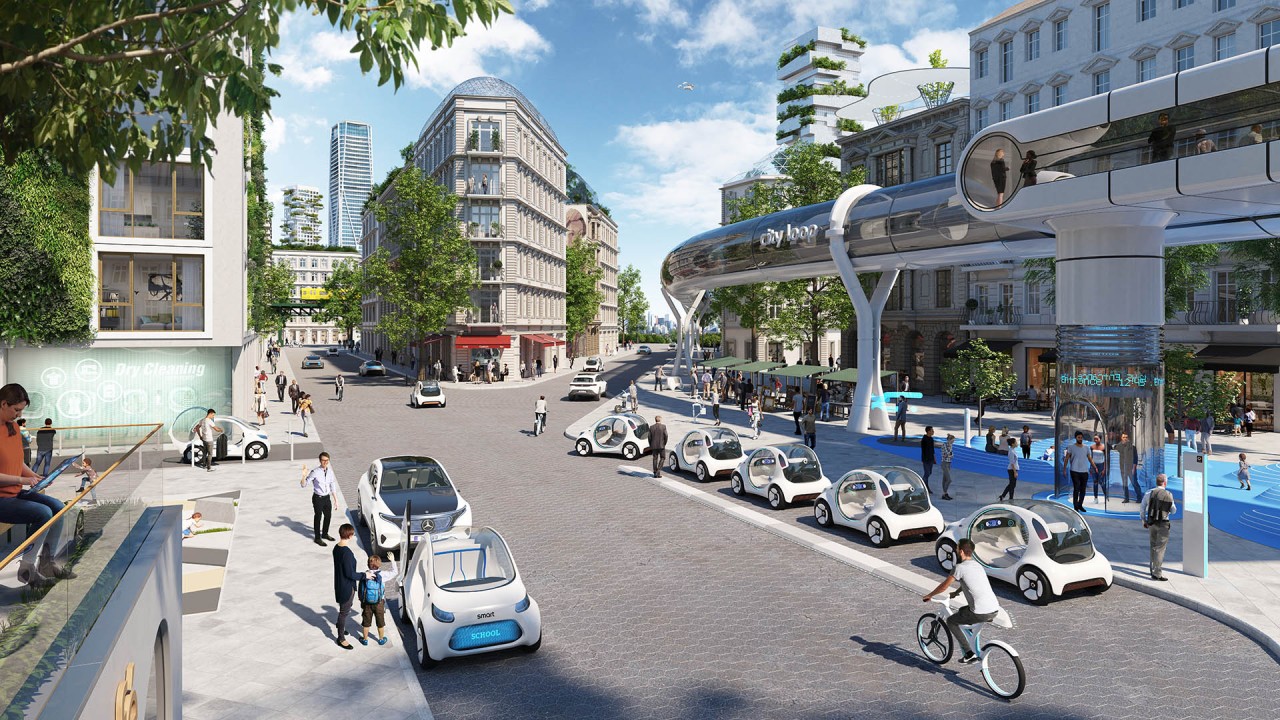In recent years, the way cities handle mobility has undergone a remarkable transformation. Urban transportation is at a crossroads, driven by increasing population density, rising environmental concerns, and the demand for faster, more efficient means of commuting. Traditional methods, like private cars and buses, are giving way to new, innovative solutions. As society pivots towards a more sustainable future, the next generation of urban mobility is being defined by cleaner, smarter, and more flexible options. The concept of urban transportation is no longer confined to motor vehicles; it now encompasses a wide variety of methods designed to enhance urban life and reduce congestion.
A significant part of this transformation revolves around electrification, the use of data to optimize travel, and the rise of shared transport services. These emerging technologies and methods are beginning to redefine how we move within urban spaces, creating a network of cleaner, safer, and more accessible transportation.
The Rise of Electrification
At the forefront of this change is the electrification of vehicles. With the adverse environmental impacts of traditional fossil fuels becoming increasingly clear, the shift to electric vehicles (EVs) represents one of the most critical changes in modern urban transportation. Electrification is being embraced at all levels, from private passenger cars to public transport fleets. Governments and local authorities are encouraging the adoption of electric vehicles through subsidies, tax incentives, and the development of charging infrastructure. In cities across Europe, Asia, and North America, electric buses, taxis, and even delivery vans are becoming more common, reducing air pollution and greenhouse gas emissions.
Electric bikes (e-bikes), electric scooters, and other electric micro-mobility solutions have also emerged as key players in urban mobility. These vehicles are especially important in densely populated cities, where space is at a premium and traffic congestion is a persistent issue. Electrified two-wheelers allow for faster and more efficient travel over short distances, while also being environmentally friendly.
A prominent trend in urban electrification is the development of e-bike sharing programs. Major cities worldwide are incorporating e-bikes into their transportation systems, providing an eco-friendly and convenient alternative for short trips. These programs, combined with advancements in battery technology and urban cycling infrastructure, are creating new opportunities for people to get around their cities in cleaner, more efficient ways.
Electric Bike UK: A Growing Trend
Electric bikes in the UK have been emerging as a popular choice for commuters, fitness enthusiasts, and those seeking a practical alternative to public transport or cars. The UK has long been a nation with a love for cycling, but the advent of e-bikes has opened up cycling to a wider audience. The electric motor on these bikes provides riders with assisted pedaling, allowing them to tackle longer distances, hills, and headwinds with ease. This has made e-bikes a practical and enjoyable option for daily commuting in cities like London, Manchester, and Birmingham, where traffic congestion is a major issue.
E-bikes also offer a range of benefits beyond convenience. Brands like Ginebikes, Cannondale or Trek are developing effective solutions to some of the most pressing challenges faced by urban dwellers. Air pollution, noise pollution, and road congestion are all reduced when more people use e-bikes instead of cars for short trips. Additionally, e-bikes help reduce reliance on fossil fuels, contributing to a cleaner and more sustainable urban environment.
The UK government has recognized the potential of e-bikes and other forms of electric micro-mobility to address these issues. Initiatives like the Cycle to Work scheme provide financial incentives for purchasing e-bikes, making them more accessible to a broader range of people. Furthermore, local governments are investing in better cycling infrastructure, including dedicated bike lanes and secure parking facilities, to make e-bike commuting safer and more appealing.
E-bikes have also become a viable alternative to public transport, especially in the wake of the COVID-19 pandemic. Social distancing measures and concerns about hygiene on buses and trains led many people to seek safer, personal modes of transportation. E-bikes emerged as a practical solution, offering a form of transportation that allowed people to maintain distance from others while still traveling quickly and efficiently through the city.
Electric Hybrid Bike: Combining Power and Flexibility
Another rising trend in urban transportation is the electric hybrid bike. They are versatile and designed to provide the benefits of both traditional pedal bikes and electric assistance. Hybrid bikes are often equipped with different modes of power, allowing riders to switch between electric assistance and traditional pedaling depending on the terrain or their energy levels. This makes them particularly well-suited to cities with varying landscapes or for individuals who want a workout without sacrificing speed or comfort.
Hybrid bikes bridge the gap between the e-bike and the traditional bicycle, appealing to those who may not want a fully electric experience but still want the option of powered assistance when needed. These bikes are also more energy-efficient than purely electric vehicles, as they allow riders to use the motor only when absolutely necessary, thus conserving battery power.
Urban centers with hilly terrains, such as Bristol and Edinburgh in the UK, have seen a growing popularity in electric hybrid bikes. These bikes allow riders to navigate challenging climbs and longer commutes while still retaining the benefits of a conventional bike. The electric motor assists in tough spots, while the lightweight frame and comfortable riding position make them ideal for commuting and city riding. Additionally, the versatility of electric hybrid bikes means that they can be used for both commuting and recreational purposes, giving riders more flexibility in their transportation choices.
The development of electric hybrid bikes has also attracted a wide demographic of users. Commuters who may have once relied on cars or public transport are switching to hybrids for the convenience of being able to combine exercise with travel. Meanwhile, older riders or those with health conditions are finding that hybrid bikes allow them to continue enjoying cycling without the physical strain that might otherwise limit them. This broader appeal has contributed to the growing presence of hybrid bikes in urban environments and helped expand the potential market for electric mobility solutions.
Shared Mobility and the Role of Data
Another key component of the new era of urban transportation is the rise of shared mobility services. Car-sharing platforms, ride-hailing services, and e-bike rental schemes are transforming how people travel in cities. The concept of ownership is being replaced by access to a range of vehicles that can be rented on-demand. Shared mobility reduces the need for private car ownership, helping to alleviate traffic congestion, reduce pollution, and make better use of urban space.
In addition, advancements in data collection and analysis are playing a critical role in optimizing urban transportation systems. Cities are increasingly using data to manage traffic flow, predict demand for public transport, and design more efficient transportation networks. Ride-hailing services, for example, rely on sophisticated algorithms to match riders with drivers in the most efficient way possible, reducing wait times and improving the overall experience.
Similarly, data-driven approaches are being used to manage shared e-bike and scooter fleets. Operators can track the location and usage patterns of their vehicles, ensuring they are deployed in the areas of highest demand. Cities are using this data to design better infrastructure, such as dedicated bike lanes, and to develop policies that promote the use of these eco-friendly alternatives.
The Future of Urban Transportation
The future of urban transportation is dynamic and multi-faceted. Electrification, shared mobility, and data-driven solutions are reshaping how people move through cities. As governments, businesses, and individuals increasingly recognize the need for sustainable transportation options, the momentum behind these innovations will only grow. Cleaner, more efficient, and more flexible transportation methods have the potential to make cities more livable and accessible for everyone.
Conclusion
In this new era of transportation, cities are becoming smarter and more adaptive to the changing needs of their inhabitants. With the continuing advancements in technology and infrastructure, urban transportation will become not just a means of getting from one place to another, but a critical part of creating sustainable, resilient, and thriving urban environments.




